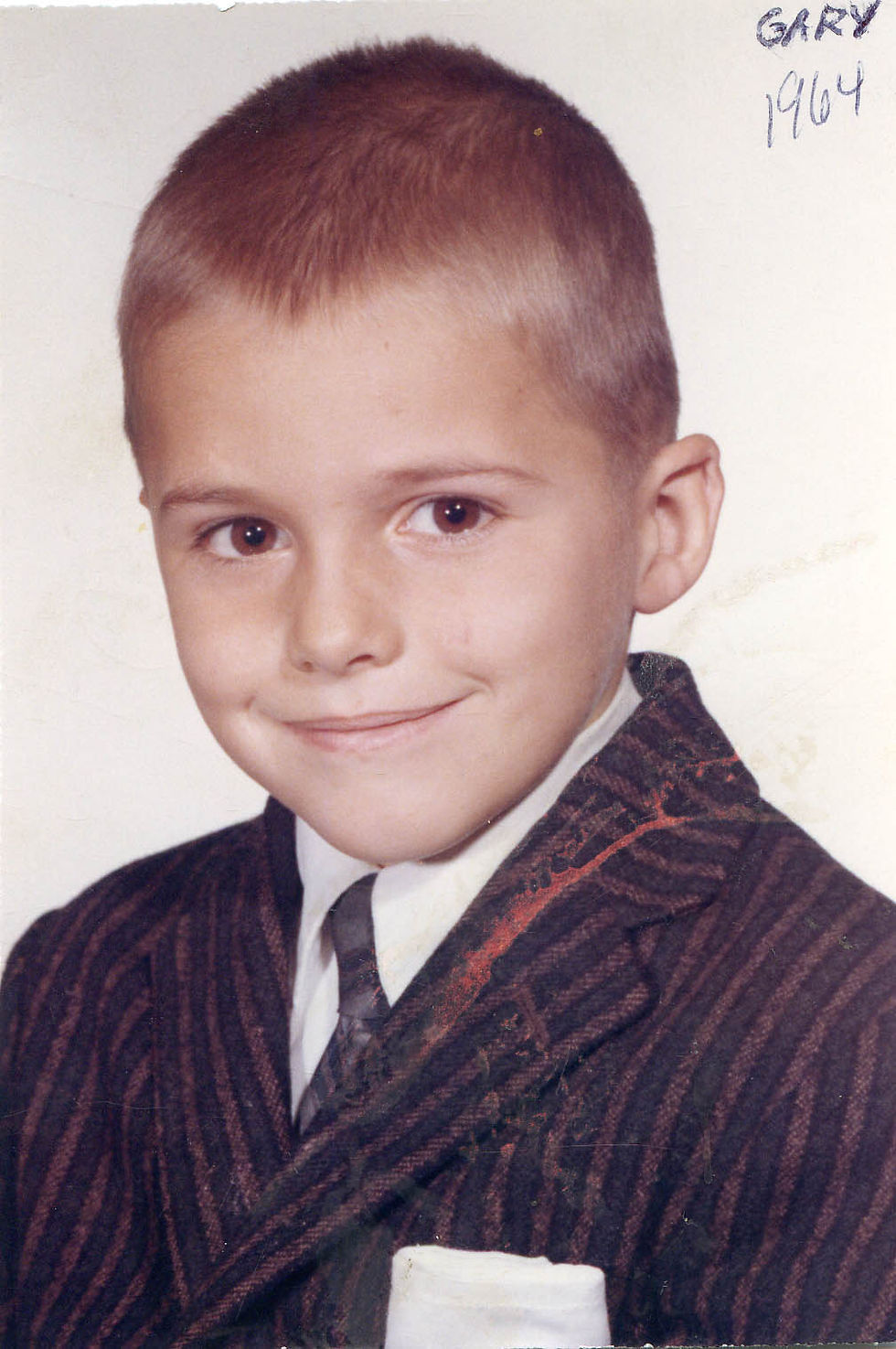Week 15, School Days: St. Hyacinth School Memories
- jujsky
- Apr 7, 2024
- 8 min read

The “Bridge Street bums” – those who attended Bridge Street School in Westbrook– went on occasional field trips to the movies, the beach, or if they were really lucky to Boston. The little sinners wasted their time on silliness and fun. According to the nuns, those children were all going straight to Hell anyway. A field trip for the pious Catholic children of St. Hyacinths generally happened when a classmate died. Everyone from tiny 5-year-old kindergartners all the way up to the moody, pimple-laden 8th graders marched two-by-two to Blais Funeral Home and paid their respects at the open casket. Some field trips were a bit more frivolous than staring at dead classmates. My mom remembers a field trip to some sort of fair held on the grounds of a nunnery in Methuen, Massachusetts, and my Aunt Judy really lucked out and watched a movie at the Star Theater with her class. That movie was The Sound of Music …because of course it was. “School Days” is the topic for Week 15 of 2024’s 52 Ancestors in 52 Weeks Challenge. At Easter, I chatted with my mom and her siblings about their Catholic school days.
Everyone in the LaViolet children's neighborhood attended St. Hyacinth School. If their parents or grandparents grew up in Westbrook, they likely attended St. Hyacinth’s too. The school opened on Walker Street in 1893 to educate the children of the French-Canadian immigrants who settled in the mill town, and went right on educating generations of their descendants until the doors closed in 1974. My grandfather sent his children there because it’s what he knew, and they have a mixture of good, bad, and funny memories of their Catholic school days.


Ron, the eldest, remembers the rulers the nuns used to whack the kids. He was the first sibling to bring up “the clackers” – a subject that had all the siblings laughing and saying, “Clack-clack!” as they snapped their hands open and shut like crab claws. The clackers were two pieces of wood joined together with a hinge. There was enough room for the nun to put her fingers between the wooden pieces, and a quick movement of her hand caused them to clack. They were used to get the students’ attention – to make them stand up, sit down, hurry up. They were even used in the bathroom, according to Ron. “If you had to pee – you held it. There were certain times you went down to the bathroom. The whole class lined up and they marched you down the stairs. They’d stand right behind you with the clackers – clack-clack-clack! Clack-clack-clack! One clack meant go, two meant you better hurry up. They’d be right behind you when you were trying to pee. One time one of the Lampron boys got tired of all the clack-clack-clacks! He turned around and yelled, ‘I’m trying to pee!’ He flashed ‘em. The nuns didn’t like that too much!” he laughed.
I asked what type of a student he was. “Not a good one! I didn’t pay attention.”
“That’s why you are the way you are today!” Steve ribbed.
Ron gave him a look and waited a beat. “At least I stayed in school and didn’t try to run away all the time!”

“That was only one day!” A very young Steve didn’t want to go to school one day, so he decided to opt out of the experience. He didn’t kick up a fuss, and when Grampy dropped him off at the front door he watched Steve dutifully walk up the steps and enter the building with Ron and Linda. What he failed to see as he turned around and started the walk home was Steve immediately leaving through another door. A short time later, my grandmother’s phone rang. It was a neighbor who lived close to the school. “Connie? Steve is in my yard playing with my daughter. Shouldn’t he be in school?” Poor Grampy returned home after trudging up the steep hill of Mitchell Street just to be told he had to go back! He retrieved Steve, and once again, deposited him at the door to the school and watched him walk in the building. Once again, unbeknownst to my grandfather, Steve walked out a different door. No sooner had Grampy arrived home than the phone rang. “Hi Connie! Steve is over here again!” Grampy didn’t take any chances. That time he walked Steve directly to his classroom and handed him off to a nun.
The siblings agreed their favorite part of the school day was recess, though the girls and the boys had very different experiences. They weren’t allowed to play together. The nuns were quick to call any girl looking at any boy “boy crazy” – a label you would carry for the rest of your years at St. Hyacinth’s whether you were 5 or 13 when you were caught looking. “I remember at recess the girls played in the street and the boys played in the field because God forbid you mix it up!” my mom, Linda, said. In fact, cars couldn’t make it up Walker Street during recess because the girls literally were in the street, playing jump rope, hopscotch, and sometimes tag. “Remember that?” she turned to her brothers. “You had a nice, big field to play in!”

Gary, the youngest, remembered the rough-and-tumble games they played in that field – always with their own balls because the school didn’t provide any sports equipment. “I remember we played ‘Kill The Guy With The Ball.’ Literally!” he chuckled. “One guy had the football and you chased him and tackled him. Heaven forbid you threw the ball away before you got tackled because then you got it worse! Then we’d play ‘Caruso.’ Everyone lined up and there’d be one guy facing them. All the guys would run towards that guy and try to run by him. If he tackled you, you had to help him the next time, so by the end, everyone was trying to tackle the one remaining guy. If you were the last one tackled, you got to start the next game. It was fun, but it was brutal!”
The school was freezing in the winter because the old boiler went out every couple of days. Instead of sending the kids home, they put on their jackets and kept working. Every day, rain or shine, they walked to school. Most kids lived close enough to walk home for lunch as well. Those who lived too far away to make it home for lunch were pitied because they ate under the supervision of the nuns, or “the old crows” as the students called them behind their backs. As individuals, many of the nuns were well-liked. Gary and Judy both recalled Sister Evelyn, a diabetic nun, with fondness. Sister Evelyn thought she was being sneaky raiding her candy stash, but her students knew what she was doing. They’d hear the rustle of a candy wrapper and then the cough Sister Evelyn faked so she could shove the piece of candy palmed in her hand into her mouth. If you were assigned to clean up Sister Evelyn’s classroom after school, she always slipped you a piece or two of the candy hidden in her closet. Sister Eloise taught kindergarten and she was another sweet nun. Rumor had it that Sister Catherine, a large nun, was once a female wrestler! She was also very kind.

While none of the nuns stood out as particularly mean or cruel, as an entity they were scary and intimidating. Catholic school “was an experience,” my mom, Linda, recalled. “I was a good girl. I didn’t skip school like that one did,” she waved a hand at Steve, “and didn’t get whacked in the hand with a ruler like that one did,” she pointed at Ron. “Judy, Gary, and I were good!” There was always the fear she could get in trouble though. “I remember if you were caught chewing gum, the nuns would make you stick it on the end of your nose and stand at attention as long as they wanted to keep you there.” She was horrified when her mother made her lie to the nuns, petrified she'd get in trouble. Judy missed the cut-off for school by a week, and Nana didn’t want to keep her home for another year. “My mother told me, ‘If they ask for Judy’s birth certificate, tell them it’s coming, or we couldn’t find it, or whatever.’ I was appalled – I had to lie to Sister!”

Speaking of Judy, she shared an experience from third grade. “My worst memory of St. Hyacinth School,” she settled into a chair and folded her hands, “is everyone was trying out for the variety show and everyone made the chorus… except for me because I can’t sing!” All her siblings laughed! “It’s not funny!” she said as she suppressed a smile. “I was heartbroken! They didn’t pick me to sing. I was traumatized by that variety show!”
My mom’s worst Catholic school memory is the way the nuns talked about non-Catholics, as though Catholics were superior to everyone. It was the opposite of the way they were raised at home. “They [the nuns] were so nasty in that we were Catholic and that’s all we were supposed to associate with. Anyone but the Catholics weren’t good… and were all going to Hell. I didn’t’ realize until I got to junior high that some of these people going to public schools were Catholic. They brainwashed us.”
In some ways, the St. Hyacinth kids had a reason to be worried about the non-Catholics. Walker Street was no longer the friendly, French-Catholic neighborhood it was a generation before. By the mid-1950s, it was rundown, and the home to many poor Protestant families. According to Ron, the Protestant kids of Walker Street called them “little Catholic bastards,” and threw rocks at them as they walked home from school. “You could get your ass kicked if you didn’t walk home in a group.” Mom felt some of the things the nuns had them do were ridiculous and made them targets for ridicule. During one of the holy days, the nuns made them all stand outside and pray to the statue in front of the school. All the people on Walker Street peeked out their windows to see what those weird Catholics were up to.
Westbrook didn’t have a Catholic high school. Grampy knew the transition from St. Hyacinth School to Westbrook High School would be difficult for his kids, and much to the disapproval of the nuns, he opted to pull them out for middle school in 7th grade. Mom shared, “My first day of 7th grade, Diane Gouzie came home and told me the whole class got down on their knees and prayed for my soul and for Dad’s soul!” The two best friends giggled hysterically. By 7th grade, both girls agreed that many of the things the nuns taught them were silly.
My grandfather was right. Transitioning to public school was tough! Each LaViolet sibling expressed they felt lost and overwhelmed in junior high. They didn’t know anyone. When my shy, introverted mom started 7th grade, she was the only St. Hyacinth student in the entire school. She remembers the relief she felt when a kind girl named Mary Labreque sat next to her and introduced herself. St. Hyacinth’s did prepare them well academically…for the most part. Their education was God-centric up until that point. Sure, they learned about Columbus just like the public-school kids, but in the Catholic version God led Columbus to America. Instead of art or music, the Catholic school taught catechism classes. Mom felt so lost in her art class, “I couldn’t even draw a circle!” she lamented. In terms of behavior, the public-school students were wild and unruly compared to their private school counterparts. Gary remembered the surprise he felt watching his classmates chat, throw things, and walk around the room. When the teacher entered the classroom he initially felt relieved that things would finally settle down, followed by shock that the teacher’s presence didn’t change their behavior. You could hear a pin drop in a St. Hyacinth’s classroom, and if a priest walked in, the students were trained to stand up immediately as a sign of respect.
Having an extra two years to adjust to public school was a big help. By the time the rest of their St. Hyacinth classmates joined them at the high school, they were comfortable with their classes and had plenty of new friends. None of the LaViolet sibling chose to send their own children to Catholic school. Though some of their memories are positive, they didn’t want to subject their children to the crazy rules, and the prejudice they were taught to feel towards non-Catholics.
And we’re all grateful for that!
Comments